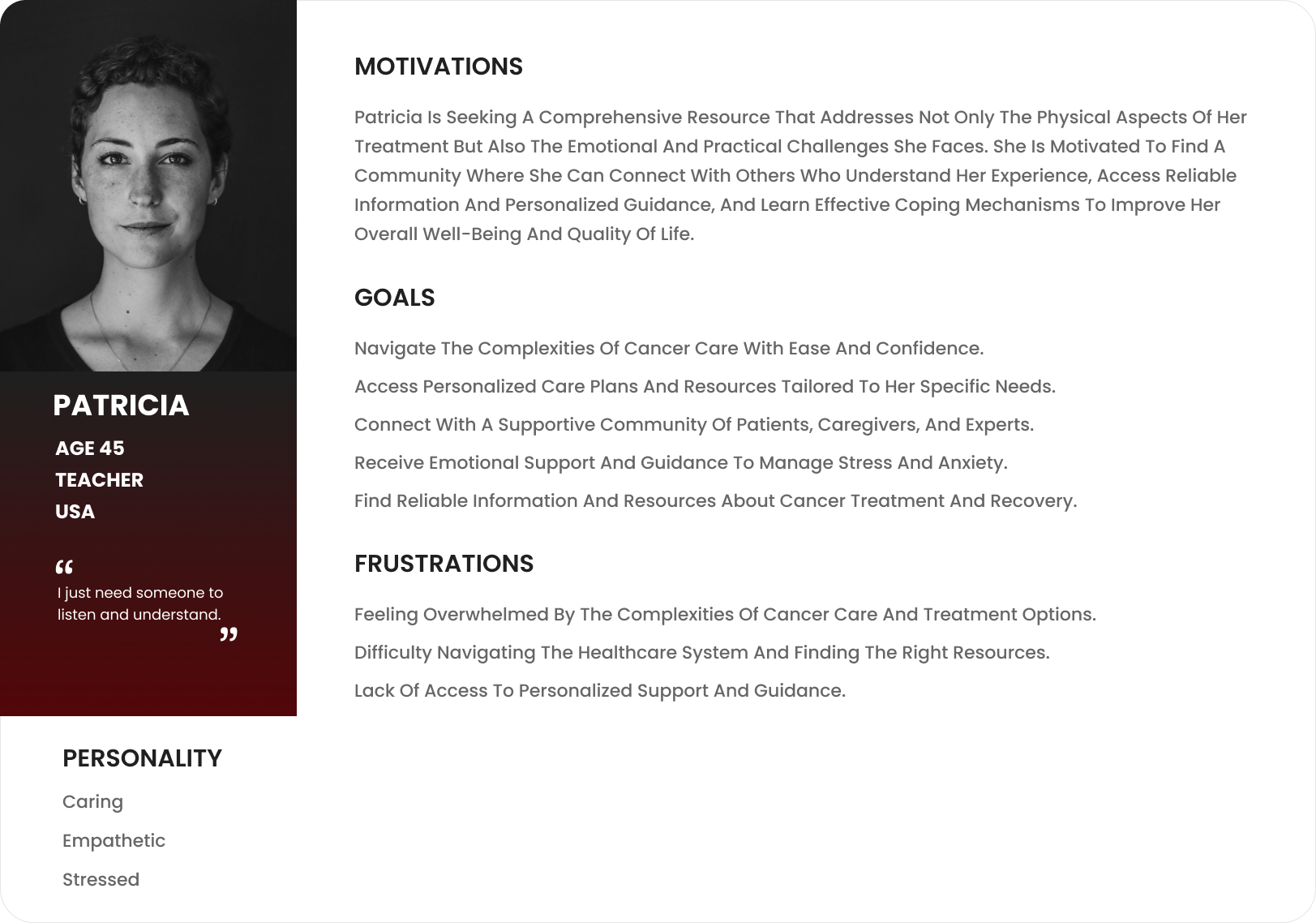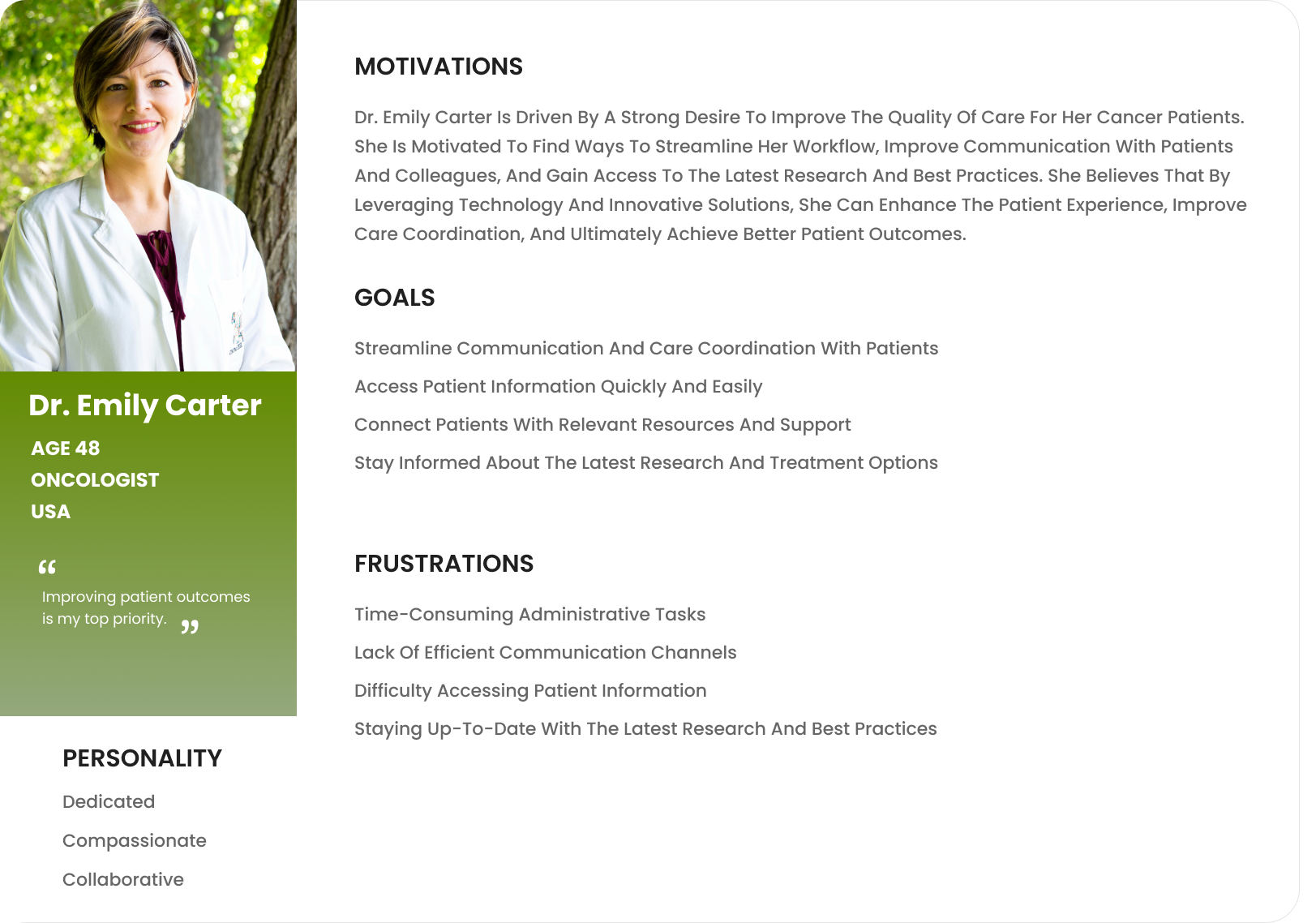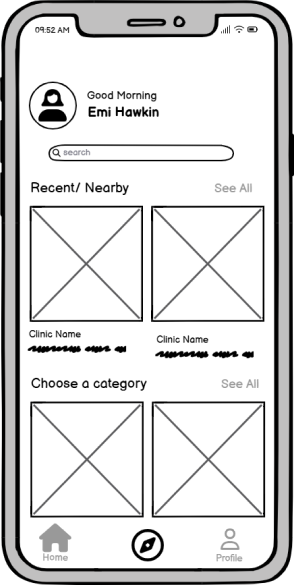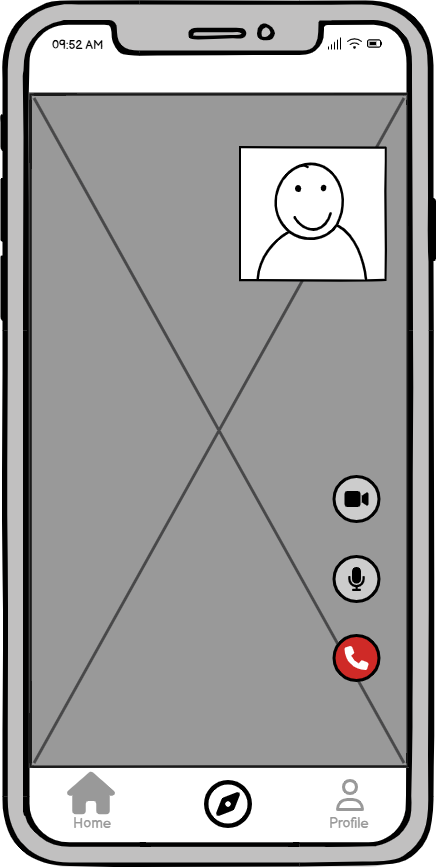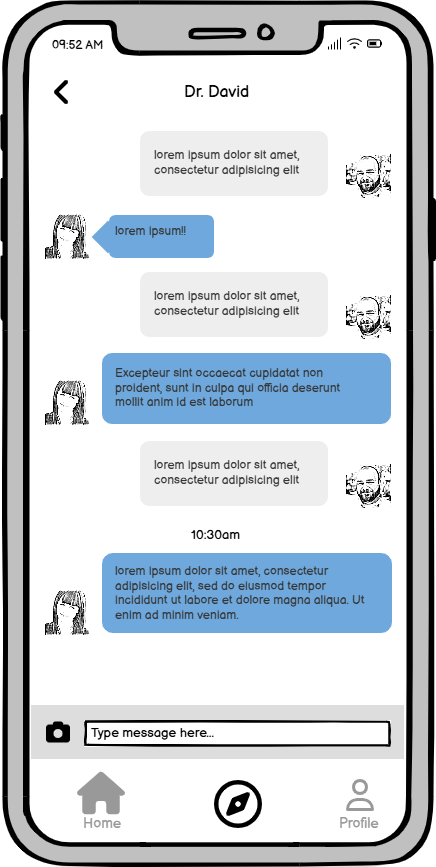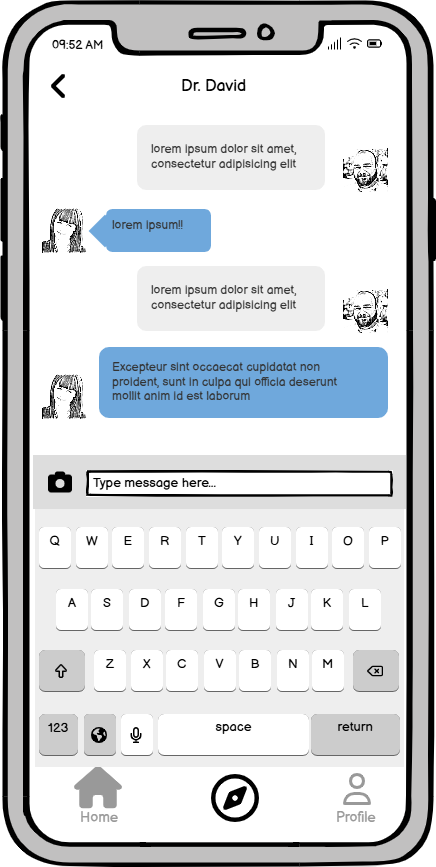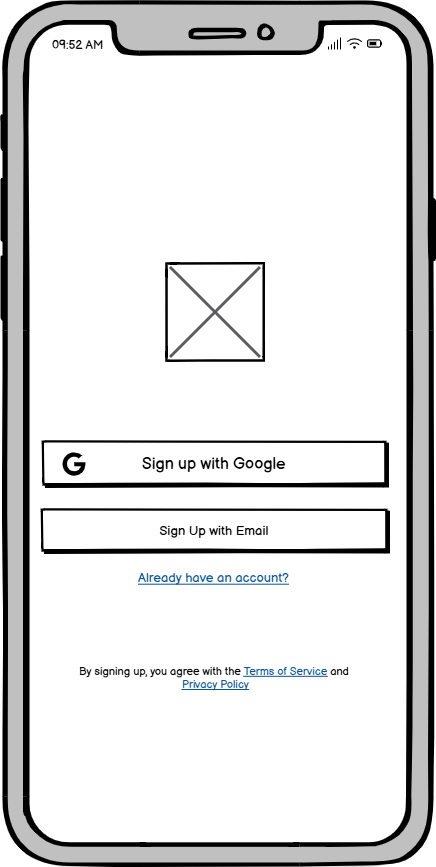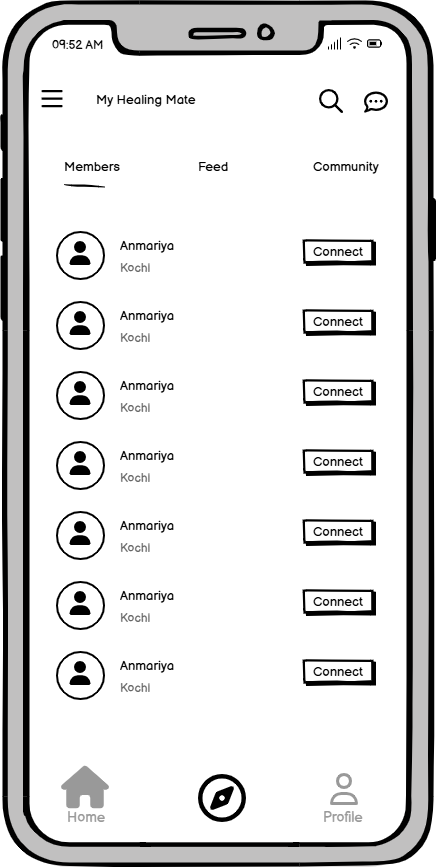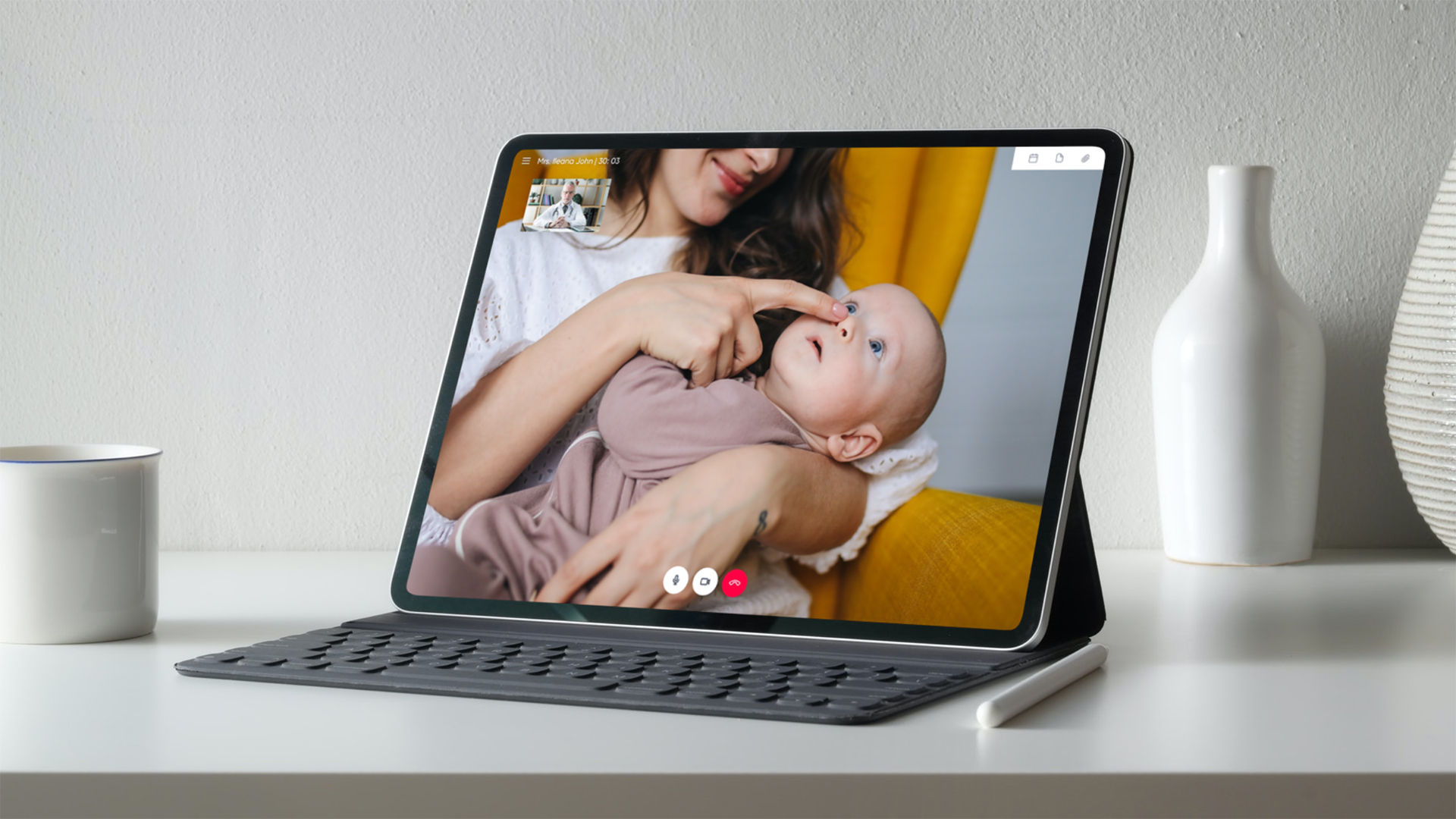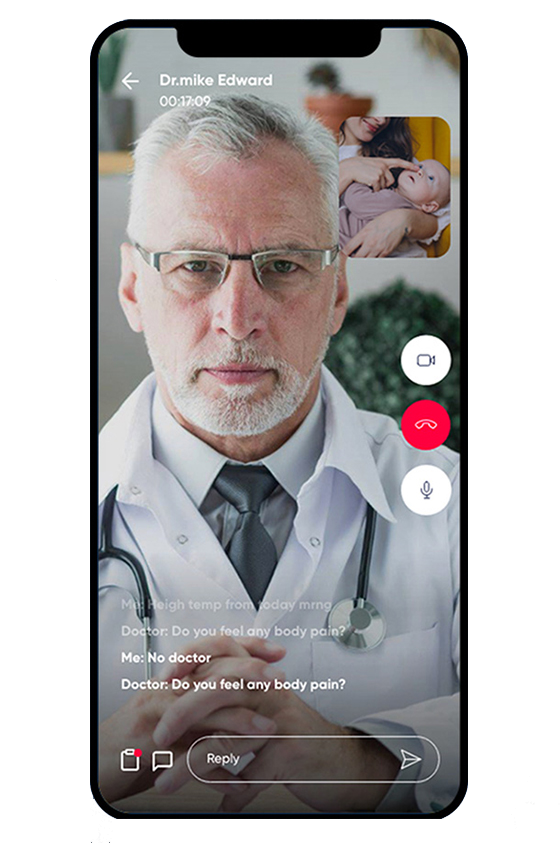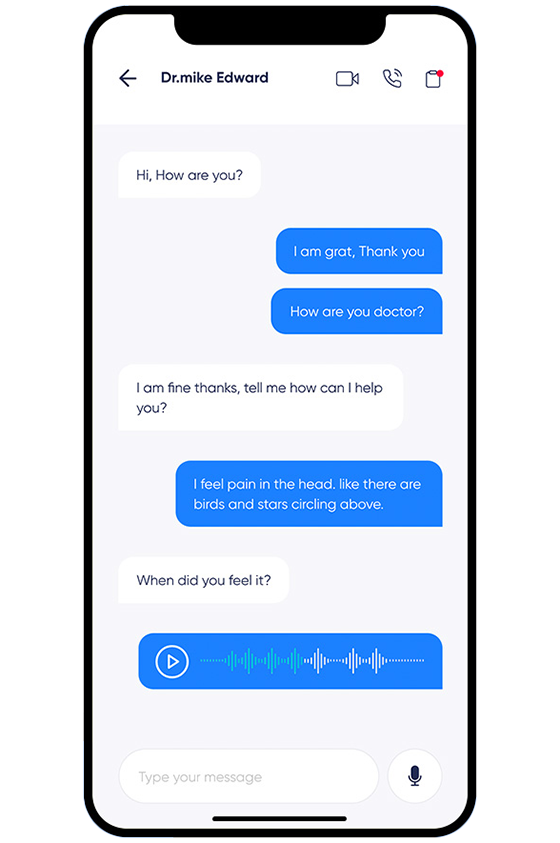Driving User Engagement by 20% with an Intuitive MHM Platform
As a UX/UI Designer, I was tasked with designing the My Healing Mate (MHM) platform from the ground up. The goal was to create a supportive and engaging digital community for cancer patients, care specialists, and experts, providing a space for connection, information, and resources.
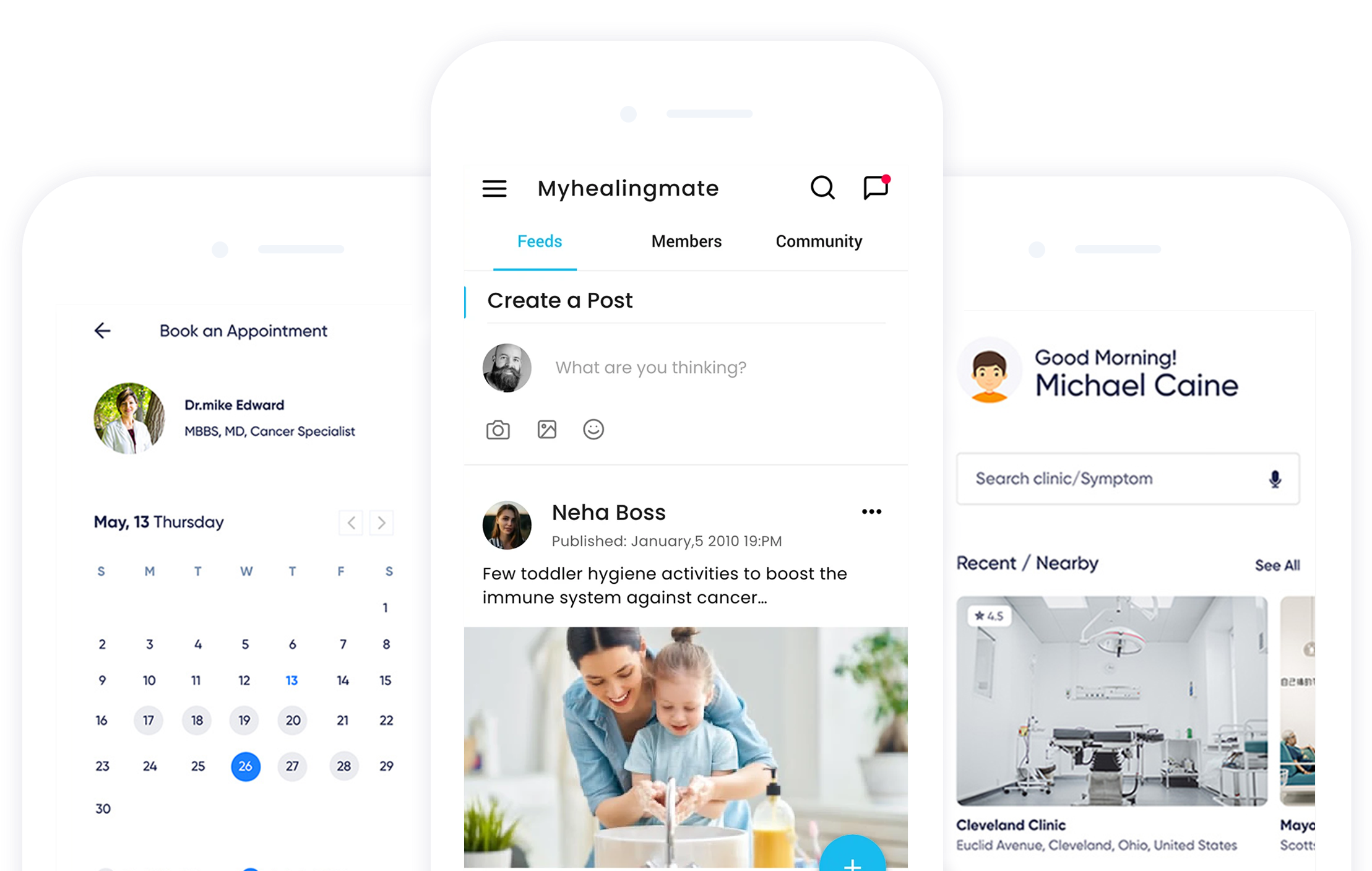
My Role
UX/UI Designer
Responsibilities
Visual Designing, User Research, Wireframing
Prototyping
Tools
Figma, FigJam, Balsamiq
The problem
The problem addressed in this project was the need to enhance the user experience and functionality of the My Healing Mate (MHM) platform, a tool designed to support cancer patients, care specialists, and experts. Specifically, the platform faced challenges related to information overload, diverse user needs, fragmented care, and limited community engagement
The goal
The goal of the My Healing Mate (MHM) project was to create a supportive and engaging digital community for cancer patients, care specialists, and experts. By addressing the challenges of diverse user needs, sensitive topics, and information overload, MHM aimed to facilitate community building, streamline access to resources, ensure inclusivity, and enhance the user experience.
User research
To gain a deep understanding of the needs and challenges faced by cancer patients, care specialists, and experts, I conducted a comprehensive user research study. This included semi-structured interviews, online surveys, and observation of user behavior on existing cancer support platforms. Initially, I assumed that the primary challenge would be providing access to medical information. However, through my research, I discovered that building a supportive community and addressing emotional well-being were equally important to users. Additionally, I learned that accessibility and ease of use were crucial factors for ensuring the platform was accessible to a wide range of users.
Pain point 1
“ Lack of Community & Support “
Many users expressed feeling isolated and disconnected from others facing similar challenges. This pain point highlights the importance of designing features that foster community and connection, such as discussion forums, support groups, and live chat options.
Pain point 2
“ Overwhelming Information “
The sheer volume of information available online could be overwhelming and confusing for users. To address this, the design should focus on providing clear and concise information, using visual cues and intuitive navigation to guide users through the platform.
Pain point 3
“ Lack of Personalized Support “
Users desired a platform that could provide tailored recommendations and guidance based on their individual needs. This suggests the importance of incorporating personalization features, such as customized dashboards and recommendations based on user preferences and history.
Pain point 4
“ Limited Access to Resources“
Users struggled to find reliable and relevant information about cancer treatment options, support groups, and financial assistance. This emphasizes the need for a well-organized and easily searchable resource library that provides comprehensive information on various topics related to cancer care.
User Persona
Patricia is a cancer patient seeking a supportive community, reliable information, and personalized guidance to navigate her treatment journey. Dr. Emily Carter is an oncologist driven to improve patient outcomes by streamlining workflows, enhancing communication, and providing access to the latest research and best practices.
Collaborative Journey
This user journey explores the experiences of both cancer patients and their oncologists as they utilize the MHM platform to navigate the complexities of cancer care. It highlights how MHM facilitates communication, information sharing, and collaborative care between these key stakeholders.
| Stage | Action | Feelings & Thoughts | Pain Points | Opportunities |
|---|---|---|---|---|
Discovery & Onboarding |
Patricia:
Dr. Carter: |
Patricia:
Dr. Carter: |
Patricia:
Dr. Carter: |
Patricia:
Dr. Carter: |
Information Access & Utilization |
Patricia:
Dr. Carter: |
Patricia:
Dr. Carter: |
Patricia:
Dr. Carter: |
Patricia:
Dr. Carter: |
Community Engagement & Collaboration |
Patricia:
Dr. Carter: |
Patricia:
Dr. Carter: |
Patricia:
Dr. Carter: |
Patricia:
Dr. Carter: |
Ongoing Support & Personalization |
Patricia:
Dr. Carter: |
Patricia:
Dr. Carter: |
Patricia:
Dr. Carter: |
Patricia:
Dr. Carter: |
The Wireframes
Wireframing process involved iterative prototyping and testing to ensure the MHM platform met the needs of all users. This iterative approach led to a user-centered design that was both functional and intuitive.
Usability Testing
To ensure the MHM platform was intuitive, user-friendly, and met the needs of both patients and oncologists, a series of usability studies were conducted. These studies involved observing participants as they interacted with prototypes of the MHM platform, completing specific tasks, and providing feedback on their experience. The goal was to identify any usability issues and areas for improvement early in the design process and iterate on the design based on user feedback.
Participant Profile

Patricia
Age: 45
Gender: Female
Relevant Experience: Uses social media, some experience with health websites, but not a lot. Expressed feeling overwhelmed by technical jargon in the past.
Test Objectives
- Evaluate the ease of use of the onboarding process, specifically focusing on privacy concerns.
- Assess the findability of support resources and community forums.
- Observe user reactions to potentially stressful content (e.g., treatment side effects information).
- Understand the user's emotional response to the platform's design and messaging.
| Task# | Task Description | Success | Time on Task | Errors/Issues Encountered | Severity | Recommendations |
|---|---|---|---|---|---|---|
| 1 | Create an account and complete the onboarding. | Partial | 6 minutes | Hesitated at the privacy policy section. Expressed anxiety about sharing personal health information. Found the consent form confusing. | Medium | Simplify the privacy policy language. Highlight data security measures. Offer a "plain language" summary of the consent form. |
| 2 | Find the support forum for breast cancer patients. | Yes | 1 min 30 sec | Navigated directly to the community section, then used the filter option (positive). | Low | |
| 3 | Search for information on managing chemotherapy side effects. | N/A (Simulated) | 2 minutes | Participant typed in "chemo side effects" and expected relevant results. Expressed frustration when no results were displayed (due to prototype limitations). Indicated they would also search for "nausea," "vomiting," and "fatigue." | High | Improve search functionality to include a broader range of keywords and synonyms. Consider predictive search. Prototype Note: Search functionality was simulated in this test. |
| 4 | Read articles about coping with anxiety related to cancer treatment. | Yes | 5 minutes | Read several articles. Expressed feeling overwhelmed by the volume of information. Suggested a "summarize" feature would be helpful. | Medium | Offer content filtering and personalization based on user-selected topics. |
| 5 | Post a message in the support forum about feeling stressed. | Partial | 4 minutes | Successfully posted but expressed concern about visibility and potential judgment from others. Suggested anonymous posting option. | Medium | Implement clear community guidelines about respectful communication. Offer anonymous posting options for sensitive topics. |
Observations & Notes
- General Observations: Patricia seemed engaged with the platform's potential but also easily overwhelmed by the amount of information. Expressed a strong need for emotional support.
- Positive Feedback: Liked the clean design and the idea of personalized content.
- Negative Feedback: Search function needs improvement, concerned about privacy, and overwhelmed by information overload.
- Unexpected Behavior: Spent a lot of time browsing the community forum before completing other tasks, indicating a strong need for connection.
Summary of Findings
- Onboarding needs to address privacy concerns more directly.
- Search functionality needs significant improvement.
- Content filtering and personalization are crucial for managing information overload.
- Community features should offer more privacy and emphasize respectful communication.
The Impact
The MHM platform has demonstrated significant positive impact, fostering increased user satisfaction, reduced frustration, and strong initial adoption among both patients and oncologists. These results validate the platform's user-centered design and its effectiveness in facilitating collaborative cancer care.
Visualizing Clarity
The visual design of MHM prioritizes both functionality and aesthetics. A clean and intuitive interface ensures ease of navigation and access to essential features. The design language is modern and approachable, aiming to reduce feelings of overwhelm and empower users to manage their care journey effectively. Particular attention was paid to accessibility, ensuring that the platform is usable and welcoming to all individuals, regardless of their visual abilities
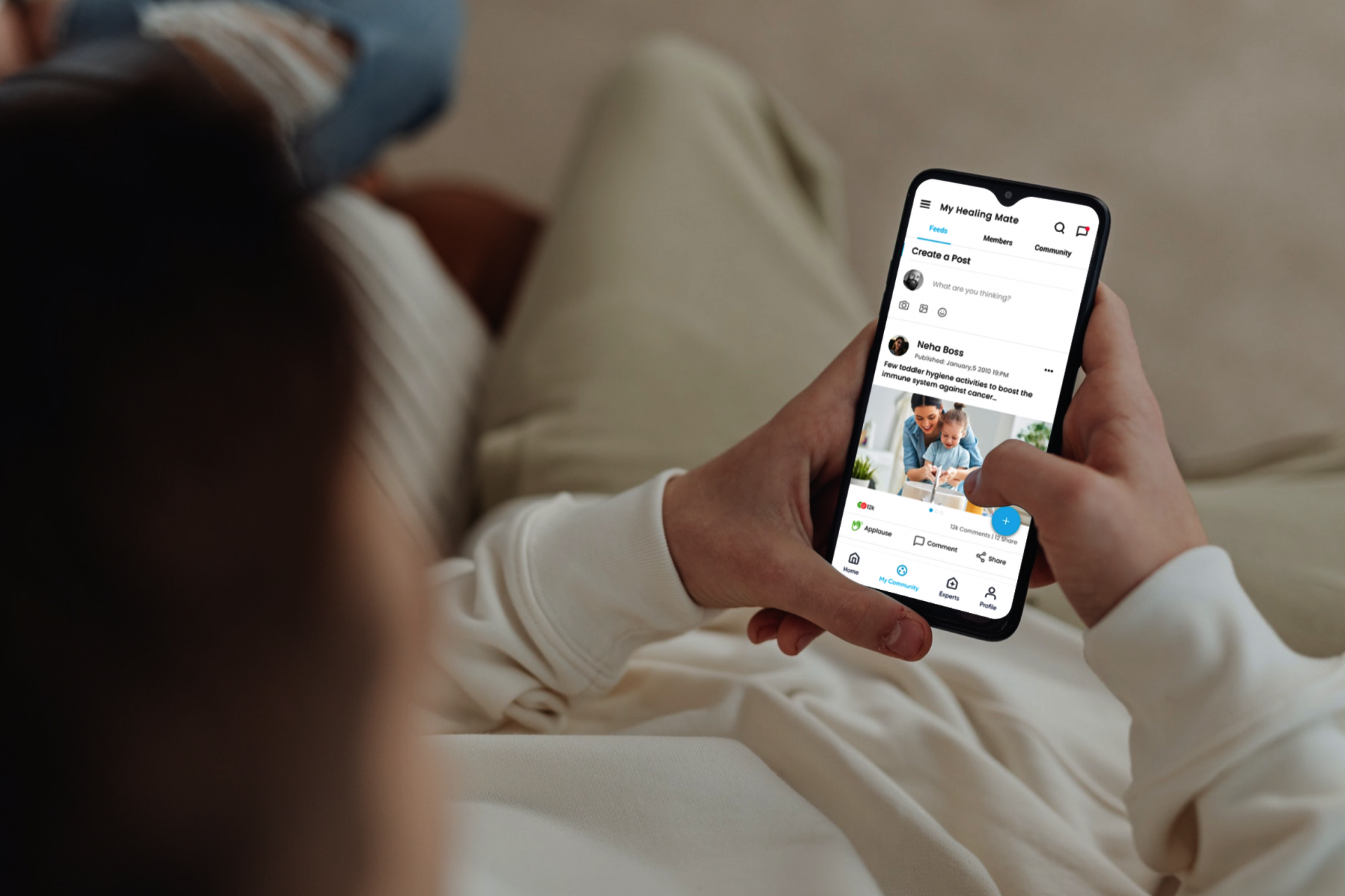
Fostering Community Connections
Welcoming and inclusive environment for users to connect, share experiences, and find emotional support.
Overwhelming Information
I recognized that the sheer volume of information available online could be overwhelming and confusing for users of the My Healing Mate platform. To address this, I focused on streamlining content, using clear and concise language, and breaking down complex information into smaller, digestible chunks. Additionally, I utilized visual cues and intuitive navigation to guide users through the platform, employing consistent labeling, visual hierarchies, and a straightforward navigation structure. These design choices aimed to reduce cognitive load and make the platform more accessible and user-friendly.
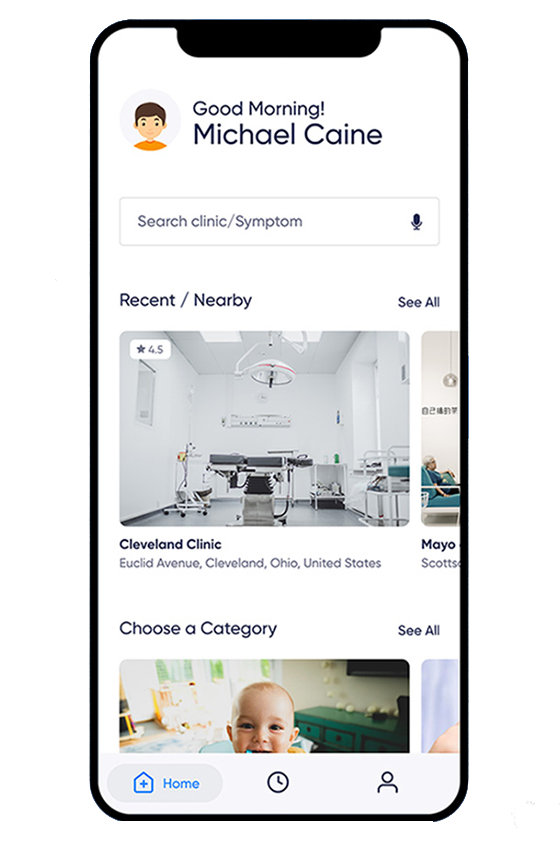
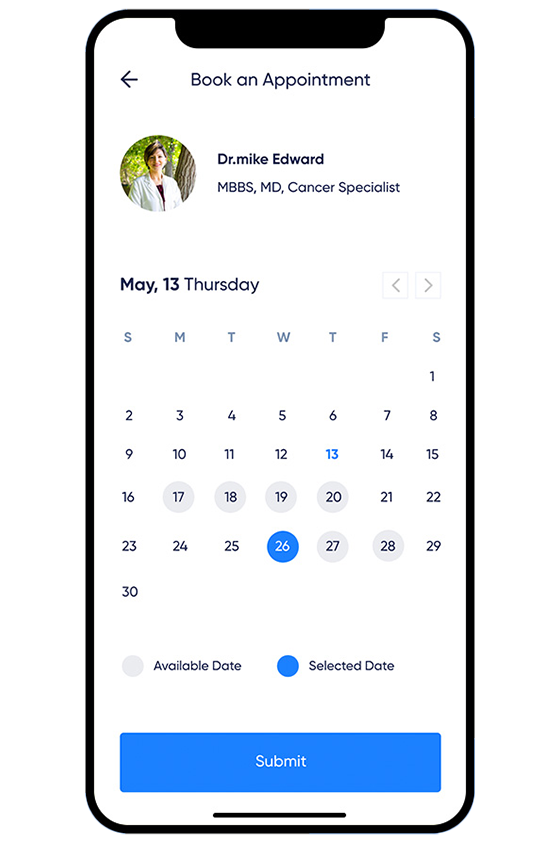
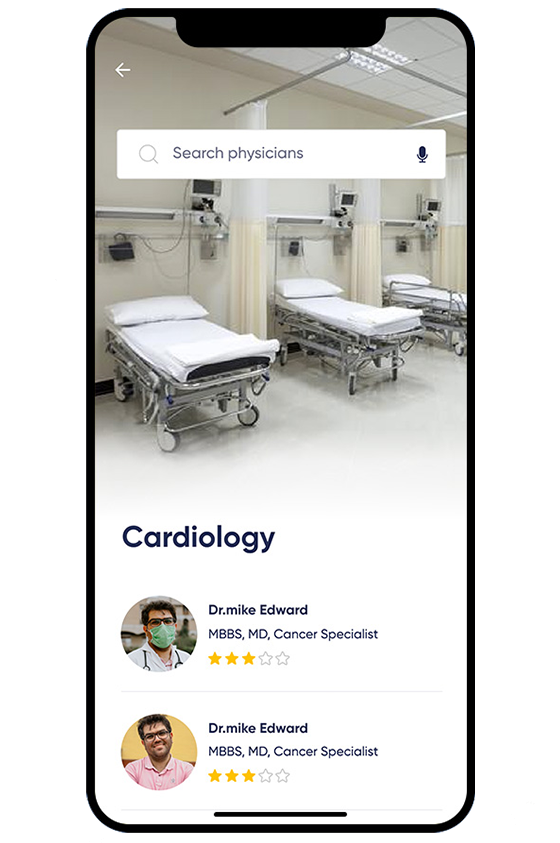
What I Learned
Through this project, I learned the critical importance of deeply understanding the emotional needs of users, especially in sensitive contexts like healthcare. I realized that designing for empathy is not just about aesthetics; it's about creating a truly supportive and empowering experience. I learned that even seemingly small design decisions can have a significant impact on a user's stress levels and their ability to access vital resources. This project reinforced the value of iterative design, allowing me to refine the MHM platform based on real user feedback and ensure it truly met the needs of both patients and oncologists.
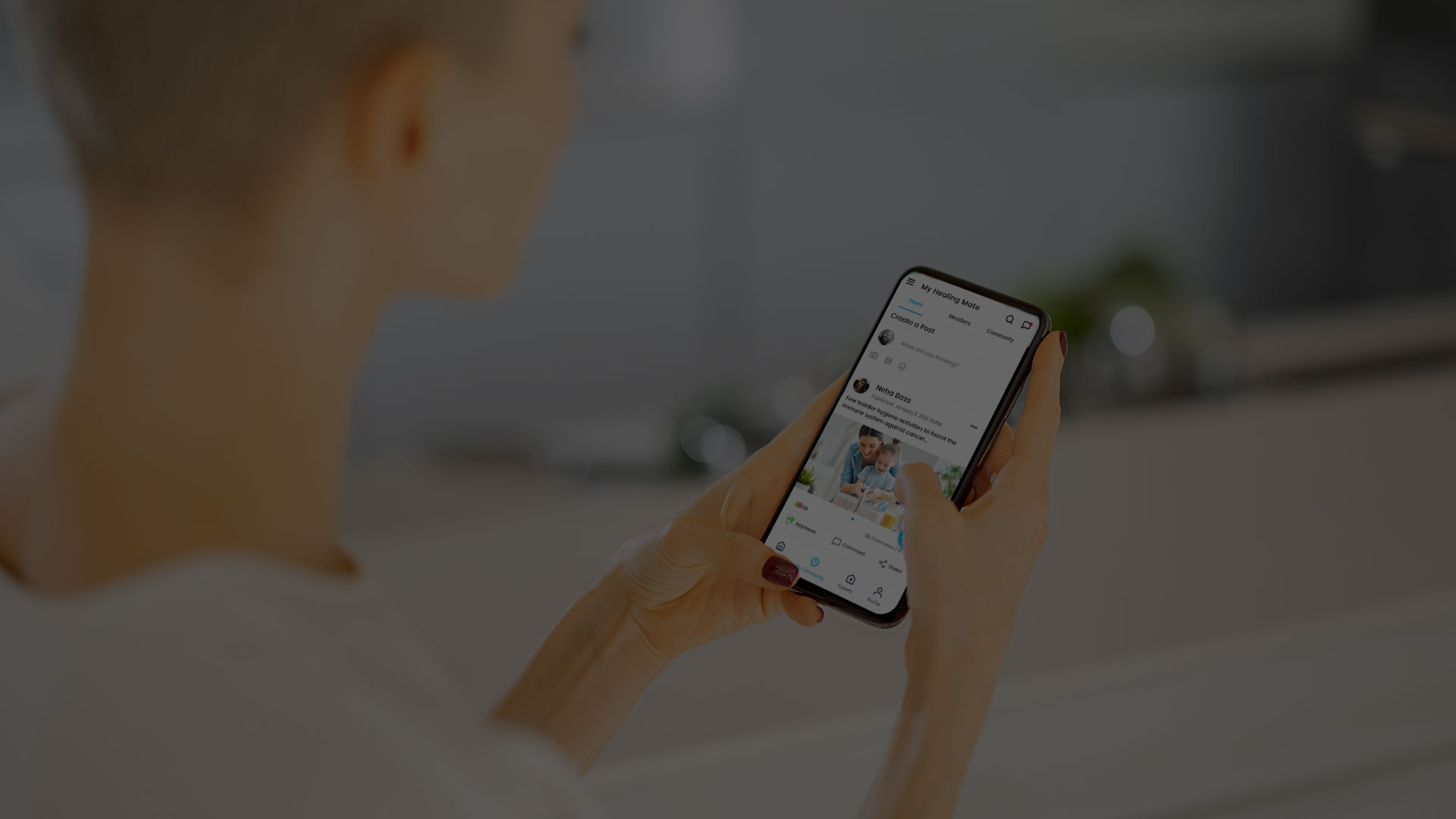
Thanks for watching
For more information or to discuss potential projects, please don't hesitate to reach out. I'm available to answer any questions you may have and explore opportunities to collaborate.


